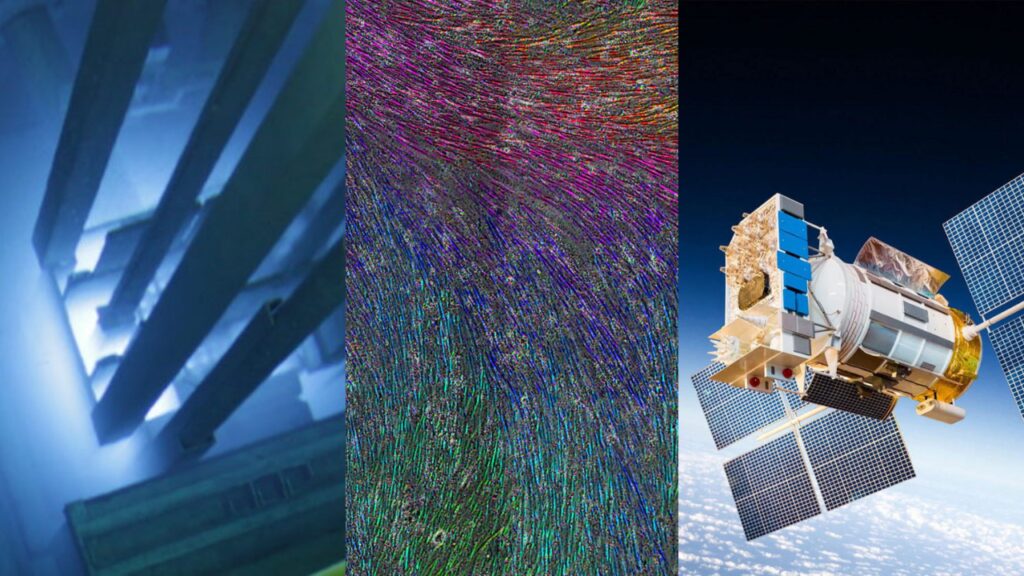Nuclear engineering stands as a pivotal field that dovetails advanced physics with practical application, enabling transformative solutions to energy challenges and medical advancements. As a burgeoning discipline, it enthralls a vast landscape of scientific inquiry and practical application. However, one may wonder what foundational physics is essential for students embarking upon this academic and professional journey.
First and foremost, an understanding of classical mechanics is imperative. This foundational physical realm delineates the behavior of macroscopic bodies under various force conditions. Concepts such as Newton’s laws of motion, kinetic and potential energy, and angular momentum are pivotal. These principles facilitate a comprehensive understanding of the forces that govern the motion of particles and bodies within a nuclear reactor, including the reactions taking place within the core.
Delving deeper, thermodynamics emerges as an indispensable branch of physics. The laws governing energy transfer, heat, and work serve as the bedrock of reactor design and operation. Topics such as the first and second laws of thermodynamics, heat engines, and entropy are critical. Students must grasp the implications of these laws on processes such as heat exchange in nuclear systems and the efficiency of energy conversion mechanisms. Here, the interplay between thermal energy and the nuclear fission process exemplifies how thermodynamics is inextricably linked to reactor efficiency and safety.
Moreover, the study of electromagnetism is crucial in nuclear engineering. This discipline encompasses electric fields, magnetic fields, and the propagation of electromagnetic waves. Students must not only familiarize themselves with Maxwell’s equations but also comprehend their applications in diagnostic imaging technologies like MRI, as well as in radiation detection instruments that are essential for ensuring safety in nuclear operations. The principles of electromagnetism also underpin the functioning of generators and transformers in nuclear power plants, wherein electromagnetic induction is utilized to convert mechanical energy into electrical energy.
Coupled with electromagnetism, the realm of quantum mechanics becomes paramount. Quantum mechanics revolutionized our understanding of matter on atomic and subatomic scales. The principles governing wave-particle duality and quantum states are fundamental in nuclear engineering, particularly when analyzing photon emissions during radioactive decay and the interactions of particles within a nuclear reactor. Moreover, concepts like tunneling have significant implications for nuclear fission processes, encapsulating the need for a robust understanding of quantum principles.
Furthermore, nuclear physics occupies a crucial niche within the canon of physics essential for nuclear engineering. An in-depth understanding of the structure of the atomic nucleus, nuclear forces, and decay processes shall empower students to analyze nuclear reactions accurately. The complexities of nucleon interactions and their resulting binding energies exemplify phenomena central to nuclear fission and fusion reactions. Mastery over these topics enriches one’s ability to engage with advanced concepts such as critical mass and chain reactions in nuclear reactors.
In addition to these classical domains, the emerging field of statistical mechanics cannot be overlooked. A thorough comprehension of statistical distributions and thermodynamic properties extends our understanding of large assemblies of particles, making it crucial for deciphering the behavior of nuclear matter under various conditions. Statistical mechanics elucidates the probabilistic nature of nuclear reactions, encompassing critical concepts such as the half-life of isotopes and the reaction rates essential for fuel stability analyses.
Then, there is the ever-increasing relevance of computational physics within the realm of nuclear engineering. As computational models and simulations become increasingly pivotal in design and analysis, familiarity with numerical methods, programming languages, and computational algorithms adds an invaluable toolset for modern engineers. This interface between theoretical physics and practical application exemplifies the iterative design process inherent in reactor engineering and safety assessments.
Moreover, the understanding of materials science is integral to nuclear engineering. An engineer must be equipped with insights into the properties of materials under radiation exposure, thermal stress, and corrosive environments. Knowledge of the degradation processes, including embrittlement and swelling in reactor components, underscores the need for interdisciplinary scholarship that spans physics, chemistry, and engineering principles. A nuanced appreciation of materials’ interactions with radiation enables the design of more resilient reactor components and enhances safety protocols.
Finally, one must consider the ethical, regulatory, and societal dimensions underpinning nuclear engineering. The interaction of physics with ethics and governance provides a framework for navigating the public perception of nuclear technologies. Engaging with topics such as risk assessment, environmental impact, and the sociopolitical implications of nuclear waste management is essential for developing holistic engineers who possess both scientific expertise and societal awareness.
In conclusion, the synthesis of physical principles is paramount for aspiring nuclear engineers. A profound understanding of mechanics, thermodynamics, electromagnetism, quantum mechanics, nuclear physics, statistical mechanics, computational physics, and materials science collectively shape a well-rounded education. Augmenting this knowledge with an appreciation of ethical considerations ensures that future innovators not only grasp the intricacies of nuclear systems but also contribute responsibly to the discourse surrounding nuclear energy and its myriad applications. As the field evolves, so too must the perspective of its practitioners, who hold the promise of driving forward both scientific discovery and societal advancement.












